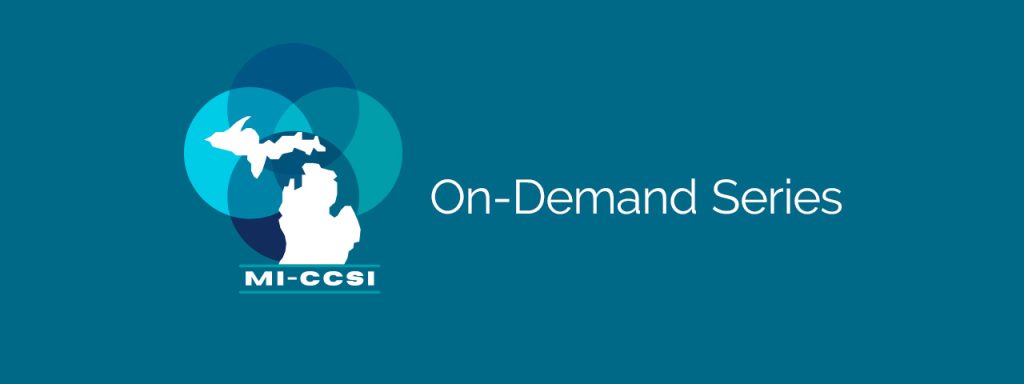

Diagnosing & Treating Chronic Pain Based on the Underlying Mechanisms
Diagnosing & Treating Chronic Pain Based on the Underlying Mechanisms – Recorded (On Demand) Training
Diagnosing & treating chronic pain based on the biomedical aspects
During this two part learning series, the participant will review the underlying mechanisms of chronic pain including nociceptive, neuropathic, and nociplastic pain, utilize a body map to determine the patient’s mechanism(s) to develop a treatment plan for pain management.
Each recorded vignette is a different topic and is available for on demand viewing and enduring continuing education credits.
Successful completion includes:
- Access the MI-CCSI Learning Management System.
- Create a New User Profile (if a new learner to the system).
- Participate in each desired learning activity.
- Complete the course evaluation after each to obtain continuing education credits.
Click to Access MI-CCSI Learning Management System
Session #1: Diagnosing and Treating Chronic Pain Based on the Underlying Mechanism: Are We There Yet?
During this learning session, the participant will review the underlying mechanisms of chronic pain including nociceptive, neuropathic, and nociplastic pain and utilize a body map to determine the patient’s mechanism(s) to develop a treatment plan for pain management.
Total time: 45 minutes
Objectives:
- Review the evolution of chronic pain management thinking
- Review the mechanisms of pain
- Identify the use of the fibromyalgia body map to identify the degree of centralization
- Identify treatment options for pain management based on the mechanism(s) of pain present
Session #2: Diagnosing and Treating Chronic Pain Based on the Underlying Mechanism: Why are we still using so many opioids to treat chronic pain?
During this learning session, the participant will review the problems associated with long-term opioid use when treating patients with chronic, non-cancer related pain.
Total time: 20 minutes
Objectives:
- Review the problems of opioids
- Review the side effects of opioids to include all-cause mortality
- Discuss the impact of opioids on pain intensity
- Discuss patient considerations prior to using long-term opioids.
Audience
This course is intended for providers and other care team members who want to learn more about understanding and diagnosing the underlying mechanisms of chronic pain.
Faculty
Daniel Clauw, MDDr. Daniel Clauw is a Professor of Anesthesiology, Medicine (Rheumatology) and Psychiatry at the University of Michigan. He attended undergraduate and medical school at the University of Michigan, following which he did an Internal Medicine Residency and Rheumatology Fellowship at Georgetown University. He stayed at Georgetown as a faculty member from 1990 – 2002, serving as Chief of the Division of Rheumatology and Vice Chair of Medicine.
While at Georgetown he founded the Chronic Pain and Fatigue Research Center (CPFRC), and in 2002 was recruited to bring this group to the University of Michigan, where the group has become one of the most successful pain research groups in the world. He also served as the first PI of the University of Michigan Clinical and Translational Sciences Award (CTSA), as well as the first Associate Dean for Clinical and Translational Research, and founded the institute that houses the UM CTSA, the Michigan Institute for Clinical and Health Research. He has over 450 peer-reviewed publications and has been the PI of over $100M in federal funding. He also has been a very active mentor, serving as the primary mentor for 40 NIH K awardees, nearly all of whom have gone on to obtain R series funding or the equivalent.
CONTINUING EDUCATION CREDITS
Providers & Nurses
AAFP: The AAFP has reviewed Treatment of Chronic Pain, and deemed it acceptable for AAFP credit. Term of approval is from 09/12/2025 to 09/11/2026. Physicians should claim only the credit commensurate with the extent of their participation in the
activity.
Contact Hours: Up to 1.25 for completion of all modules.
Approval #: 108945
Nurses:
Note: Nurses can use CME credits toward re-licensure.
Michigan Board of Nursing Continuing Education Requirements Details
Conflict of Interest: There is no conflict of interest for anyone with the ability to control content for these activities.
Questions
If you have any questions, contact Amy at amy.wales@miccsi.org